Metaverse and Web 3.0 technologies scale the way we behave as a society, they influence how our enterprises operate and hold the promise of having the capacity to shape -and change- our world for the better or the worst.
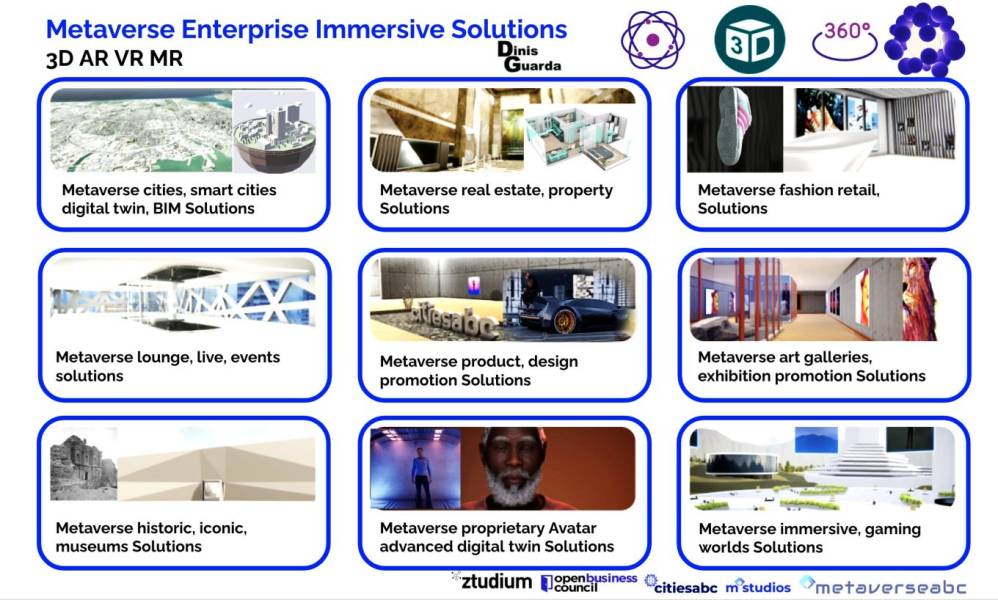
Digitalisation Metaverse Enterprise and Digital Twins
“The people are pieces of software called avatars. They are the audiovisual bodies that people use to communicate with each other in the Metaverse. Hiro’s avatar is now on the Street, too, and if the couples coming off the monorail look over in his direction, they can see him, just as he’s seeing them.” – Neal Stephenson, Author, creator of the concept Metaverse.
We are meta-physic and carbon-based algorithm pieces of the planet earth and the universe. As our species evolves, we digitise our world and ecosystems with our tribal narratives and social cultural and economic business and technological models. Metaverse immersive technologies and Web 3.0 are the foundation and tools of our days that allow us to open this process of digitalisation of society and of ourselves.
As Neal Stephenson’s prophetic book Snow Crash predicted 30 years ago, we are increasingly pieces of software between our ideas, our carbon bodies and the data we produce, our — digital twins — and increasing the carbon footprint of our human presence.
These technologies are powerful and together with the so-called 4th Industrial Revolution that includes — AI, spatial computing, Internet of Things, blockchain certification are the most disruptive ones we ever built as a species in the last 30,000 years.
“Metaverse isn’t a thing a company builds. It’s the next chapter of the internet overall.” – Mark Zuckerberg, Meta.
“It is a massively scaled and interoperable network of real-time, rendered, 3D virtual worlds that can be experienced synchronously and persistently by an effectively unlimited number of users, each with an individual sense of presence.” – Matthew Ball, Author, formerly Amazon.
“A hybrid work environment will likely be with us in some form, and as a result, multithreaded work streams will be required to ensure productivity regardless of location. In order to help people be productive, context switching is helpful for workers who have to manage concurrent work streams with co-workers, partners, customers and other stakeholders. Metaverse platforms provide a way to maintain that productivity while understanding that most employees have grown accustomed to a blend of consumer and enterprise tech—which has become part of their daily routine due to blended work-home environments,” – Wendy M. Pfeiffer, Forbes Councils Member.
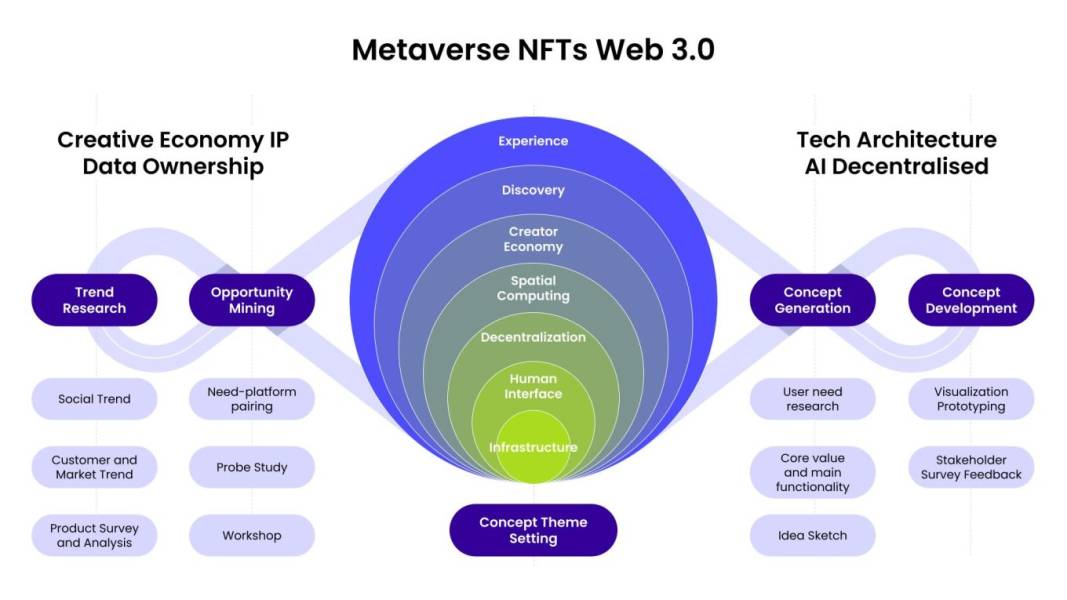
Metaverse and Web 3.0, independent of the definitions or how we perceive them, are massively scaling the way we behave as a society and enterprises and hold the promise of having the capacity to shape and change our world for the better or the worst.
These technologies and related tools, research, and narratives will change the way we behave, do business, work, study, socialise and pay bills. Enterprise Metaverse is a massive chapter, for the emergent concept and narrative around Metaverse. The understanding of Metaverse Enterprise will open new business models and offer new ways to look at how the business world and entrepreneurial sector can greatly prepare and benefit from these technologies and how these can be an immense opportunity (and also challenges) for society, countries and cities.
In an enterprise environment, the last two years have shown that remote work is both possible and practical for various businesses. Many remote workers have thrived in environments that include both consumer and enterprise technology, finding new ways of collaborating across vast distances without major disruptions to their productivity.
As Wendy M. Pfeiffer, Forbes Councils Member, recently wrote: “The metaverse promises to unify these types of social connections in a network that includes virtual reality components. However, the underlying idea isn’t some far-off point in our future. It’s available and is already widely in use.”
Beyond remote working, Metaverse Enterprise comprehends multiple layers that we highlight and summarise here:
1. Create new solutions to bridge our physical reality and our virtual digital data-driven increasing interactive spaces in 3D;
2. Incentivise new immersive digital transformation business, sales, marketing, PR, and commercial opportunities;
3. Boost the ways we do media, entertainment, tourism sectors and create new virtual, augmented and immersive experiences that will allow us to better travel and promote cities, real estate and countries;
4. Attract new interactive and immersive ways to do business while focusing in new ways to get growth and investment;
5. Create physical and virtual metaverse new work environments and jobs;
6. Add substantial value to businesses, cities, regions and increase government and cities’ GDP in five years;
7. Of course, new scenarios like Ready Player One dysfunctional social economic and financial risks, includes mental wellness, cybersecurity, definition of human interactions and all the issues we face as humanity augmented in non ending ways possible with our imaginations for the better or worse.
Recent research from Citibank highlights that the metaverse could be a $13 trillion industry by 2030. The numbers differ but most of the major companies in the world are already testing and looking at solutions for the Metaverse Enterprise new iterations, possibilities and challenges. And of course the companies that are able to create new utilities out of these technologies will replace the present world economic and financial business models.
We are taking ourselves and the world into digital. Everything we do is being digitised. Everything we do creates layers of data and interactivity. Increasingly our devices are interacting with us and as we walk through our cities and travel we use augmented imemrsive tools and ways to improve our mobility, health and entertainment.
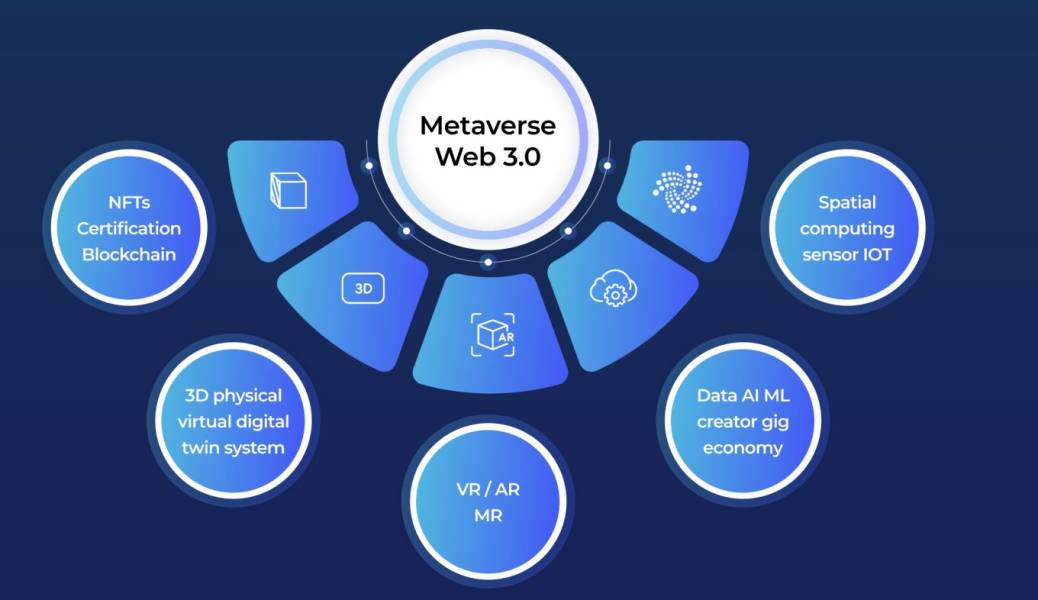
Defining Digitalisation and Digital Transformation
Digitalisation is the process of converting information into a digital format also known as digital transformation. The concept and definitions are open and are transforming society, businesses and our economic models and a result is the representation of an object, image, sound, document, or signal obtained by generating a series of numbers that describe a discrete set of points or samples.
Defining Metaverse
Metaverse has a lot of definitions and issues. Mainly Metaverse and Web 3.0 are the two most important, exponentially growing technologies, 3D and narrative directions of our times as we digitalise and create bridges between the physical and digital. They are bound to create new opportunities as well as, probably even bigger, challenges and risks. The definition of a metaverse comprehends a structured continuum of shared, 3D digital virtual space(s) aligned into an expended, augmented, virtual set of ecosystems, universe.
As big corporations, governments, regulators, and lawmakers alike are trying to catch up with these technologies, they are also looking at the possibilities and also of course the challenging Pandora’s box of issues that come with them. What the Metaverse is, first of all is a narrative to create a digital transformation bridge between web 2.0 and so-called web 3.0. Secondly, Metaverse requires a lot of infrastructure for both technology, narrative and special social economic possibilities that will include legal requirements and issues that can and might potentially arise in relation to this topic are just some of the questions that regulators need to answer.
The Metaverse is therefore the overlay of our physical and digital capacities to expand our visions, imagination plus related data on the real world. AR, VR, MR solutions together with BIM, digital twins incorporating AI, spatial computing associated with certification Blockchain, NFTs make this possible in an unprecedented way taking it to a new iteration. Research from Citibank highlights the Metaverse could be a $13 trillion industry by 2030. Citi Global Insights explains that the new, Metaverse-based future will make online experiences more accessible, and inclusive, but also will raise some social concerns, including privacy issues, or online harm.
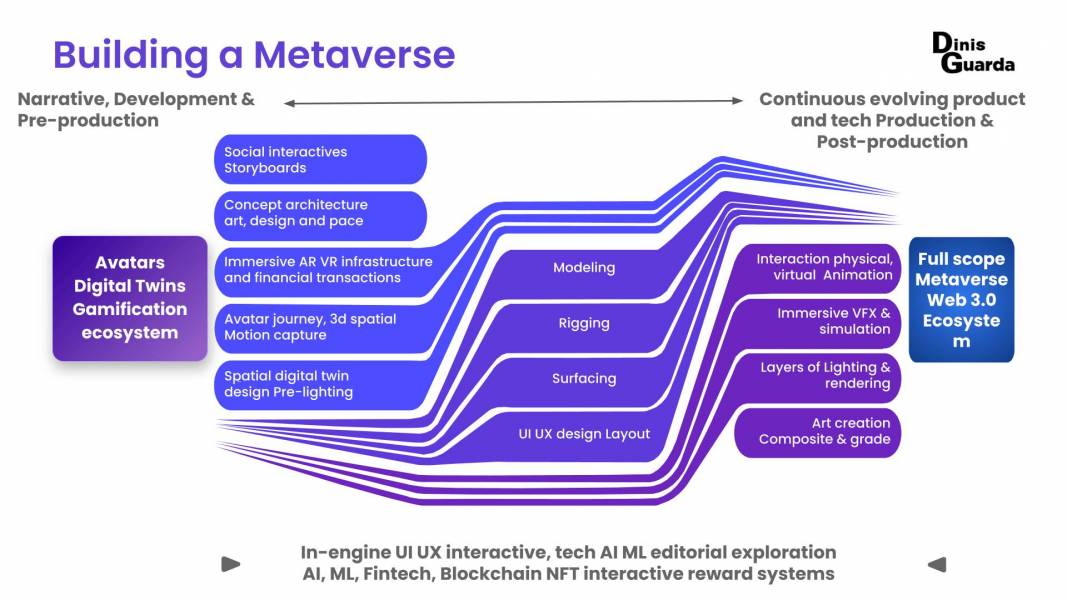
“Many brands intuitively or on purpose are moving towards the metaverse which is creating a global economy on track to exceed the current one, many times over,” Panchenko says. “There will be no other option but to join it. Otherwise, you will not survive as a company.” Vlad Panchenko, Founder and CEO of DMarket.
Defining Metaverse Enterprise
Metaverse Enterprise is the multiple ways to create immersive business enterprise solutions. Metaverse technologies and solutions that include digital twins as a company, and business can be associated in multiple Steps.
“As we continue to move toward a world where constant context switching is part of everyday life, business leaders need to look at the technologies and tools they provide to their workers and reimagine those tools for how people interact in their personal lives. Platforms like Discord are paving the way toward a metaverse-like future because they understand that the future of productivity will be about maintaining multiple personal and corporate identities in a digital world. This is the true value of the metaverse (not those cute, virtual avatars), and it’s already here,” commented Wendy M. Pfeiffer, Forbes Councils Member.
What are the industries that will be the ones benefiting mostly with this recent Metaverse Enterprise technology? And in what ways? Below, we identify some where the metaverse is shaping the hype!
Step 1: Create immersive 360 business solutions to support businesses 360 in the physical and digital interactive efforts.
Step 2: Build new Customer Virtual AR VR Branding Interactive Personae. Identify the type of customers you’re trying to connect with, build immersive experiences and communities with them.
Step 3: Understand and navigate the opportunities and challenges coming to/with Virtual Augmented Immersive Businesses Spaces.
Step 4: Create Different Immersive Marketing, PR and expanded distribution Channels.
Step 5: Begin, grow, learn, work, play your Virtual Identity and Hardware Journey in much more integrated and immersive ways.
Step 6: We are and will increasingly create a live and a future in these metaverses (our children are already doing in games like Roblox) and will get in and get out like we do of our phones and social media platforms seamlessly moving in new blueprints between the physical and virtual augmented experiences and worlds.
“The metaverse is here, and it’s not only transforming how we see the world but how we participate in it — from the factory floor to the meeting room.” – Satya Nadella, Microsoft.
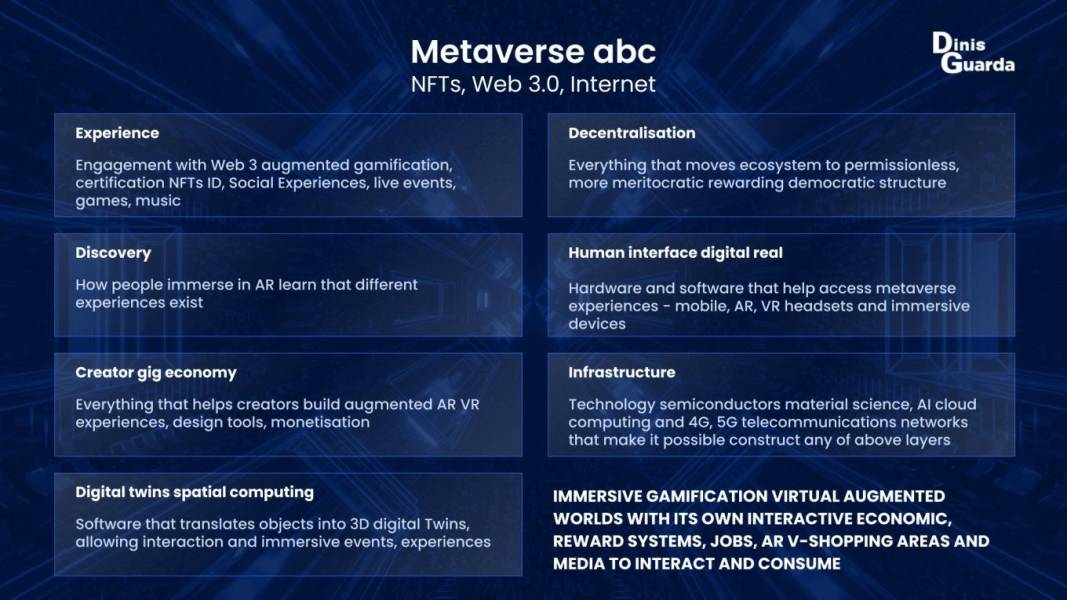
Defining Digital Twins
Digital twin is an important subject of our times of bridging physical versus digital. Digital twins are a data and visualisation — virtual representation — of an object, body, property, space or cities, and the related system(s) that spans a digital modelling lifecycle. A Digital Twin offers a structure pace of digital 360 overview that is updated from real-time data, and uses simulation, machine learning and reasoning to help decision-making.
Defining BIM
The concept of Building information modeling — BIM is a structure process that creates a supported framework that incorporate various tools, technologies and contracts involving the generation and management of digital representations of physical and functional characteristics of places.
Metaverse Opportunities for Enterprise Businesses:
• 3D AR VR MR Hardware company;
• Real estate digital twins Business information modelling;
• Health digital twin and prognostic immersive tools;
• Augmented digital identity;
• Augmented 3D Manufacturing solutions;
• Immersive spatial computing spaces and engines;
• Gamification immersive worlds;
• Gamification AR VR MR engines;
• Social immersive experiences;
• Working spaces, Events, concerts and live sessions;
• Interoperability metaverse immersive cross-search engines;
• Gaming and entertainment/leisure Industries.
Find out 10 industries that will change with the Metaverse revolution:
“The metaverse is coming. Metaverse is not only a place to game. Future worlds will be photorealistic, obey the laws of physics, and be inhabited by human avatars and AI beings. We will create a future in these metaverses before actually downloading the blueprints to be fab’ed in the physical world.” – Jensen Huang, Nvidia.

Dinis Guarda is an author, academic, influencer, serial entrepreneur, and leader in 4IR, AI, Fintech, digital transformation, and Blockchain. Dinis has created various companies such as Ztudium tech platform; founder of global digital platform directory openbusinesscouncil.org; digital transformation platform to empower, guide and index cities citiesabc.com and fashion technology platform fashionabc.org. He is also the publisher of intelligenthq.com, hedgethink.com and tradersdna.com. He has been working with the likes of UN / UNITAR, UNESCO, European Space Agency, Davos WEF, Philips, Saxo Bank, Mastercard, Barclays, and governments all over the world.
With over two decades of experience in international business, C-level positions, and digital transformation, Dinis has worked with new tech, cryptocurrencies, driven ICOs, regulation, compliance, and legal international processes, and has created a bank, and been involved in the inception of some of the top 100 digital currencies.
He creates and helps build ventures focused on global growth, 360 digital strategies, sustainable innovation, Blockchain, Fintech, AI and new emerging business models such as ICOs / tokenomics.
Dinis is the founder/CEO of ztudium that manages blocksdna / lifesdna. These products and platforms offer multiple AI P2P, fintech, blockchain, search engine and PaaS solutions in consumer wellness healthcare and life style with a global team of experts and universities.
He is the founder of coinsdna a new swiss regulated, Swiss based, institutional grade token and cryptocurrencies blockchain exchange. He is founder of DragonBloc a blockchain, AI, Fintech fund and co-founder of Freedomee project.
Dinis is the author of various books. He has published different books such “4IR AI Blockchain Fintech IoT Reinventing a Nation”, “How Businesses and Governments can Prosper with Fintech, Blockchain and AI?”, also the bigger case study and book (400 pages) “Blockchain, AI and Crypto Economics – The Next Tsunami?” last the “Tokenomics and ICOs – How to be good at the new digital world of finance / Crypto” was launched in 2018.
Some of the companies Dinis created or has been involved have reached over 1 USD billions in valuation. Dinis has advised and was responsible for some top financial organisations, 100 cryptocurrencies worldwide and Fortune 500 companies.
Dinis is involved as a strategist, board member and advisor with the payments, lifestyle, blockchain reward community app Glance technologies, for whom he built the blockchain messaging / payment / loyalty software Blockimpact, the seminal Hyperloop Transportations project, Kora, and blockchain cybersecurity Privus.
He is listed in various global fintech, blockchain, AI, social media industry top lists as an influencer in position top 10/20 within 100 rankings: such as Top People In Blockchain | Cointelegraph https://top.cointelegraph.com/ and https://cryptoweekly.co/100/ .
Between 2014 and 2015 he was involved in creating a fabbanking.com a digital bank between Asia and Africa as Chief Commercial Officer and Marketing Officer responsible for all legal, tech and business development. Between 2009 and 2010 he was the founder of one of the world first fintech, social trading platforms tradingfloor.com for Saxo Bank.
He is a shareholder of the fintech social money transfer app Moneymailme and math edutech gamification children’s app Gozoa.
He has been a lecturer at Copenhagen Business School, Groupe INSEEC/Monaco University and other leading world universities.











